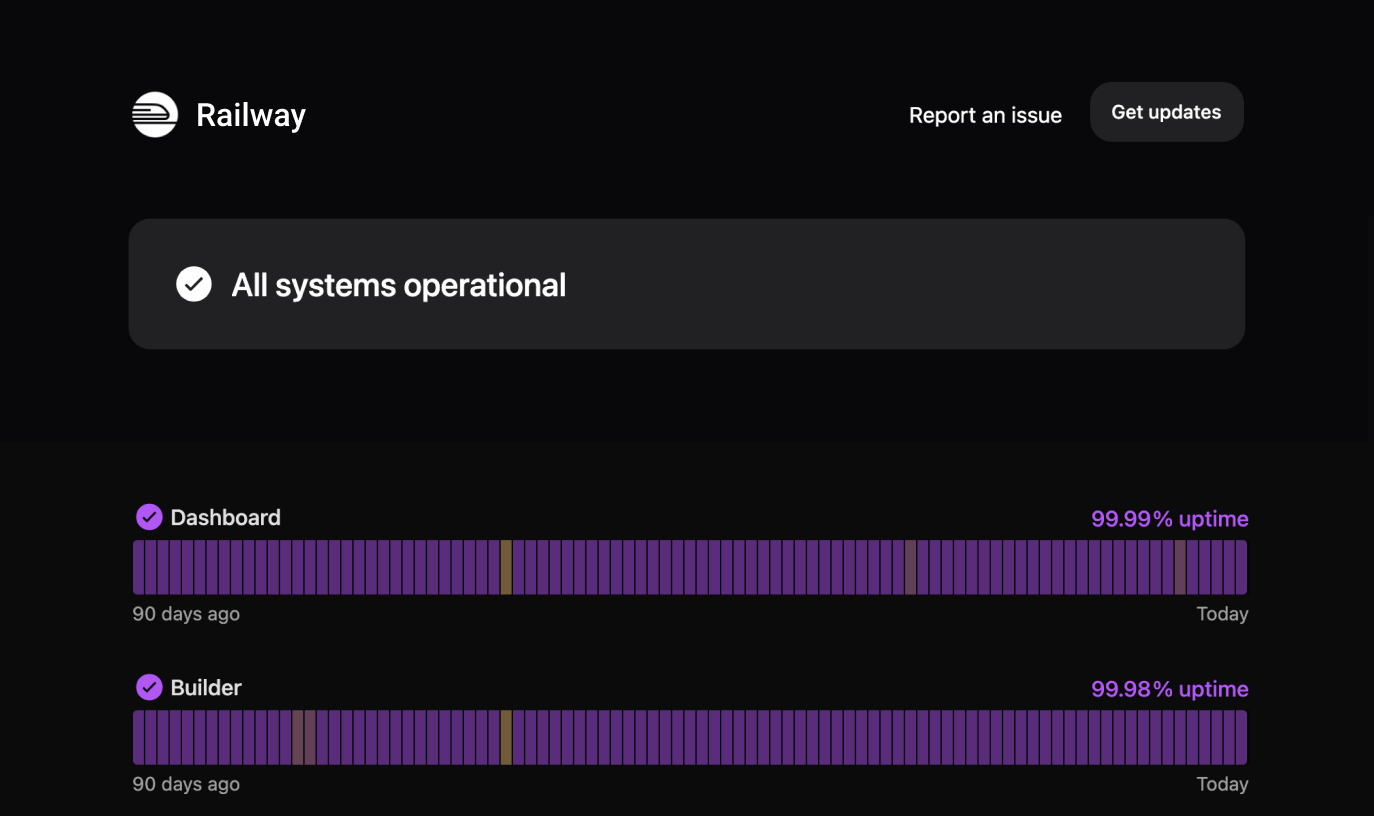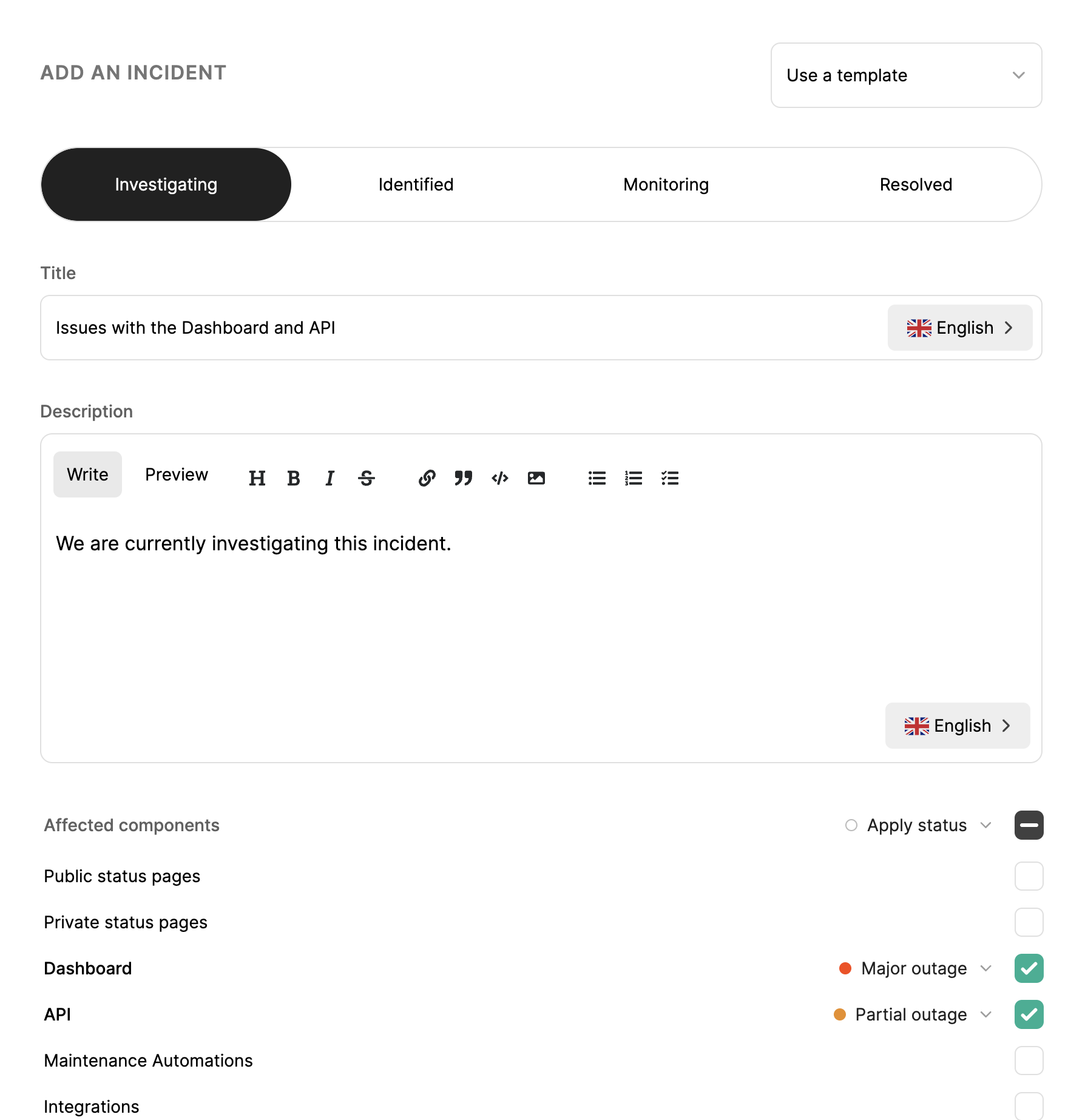What Is A Production Environment And Why You Must Know

Discover what goes on in the production environment. Learn why mastering deployment is essential to address challenges effectively.

You've poured your blood, sweat, and (probably) a few cups of coffee into crafting the perfect app. It's sleek, functional, and ready to take the world by storm. But wait! Before you leave the test environments, there's one crucial stop– the production environment.
It is the stage where your app is finally released to real users. Navigating production environments can be as thrilling as it is intimidating. It's a new world with rules, quirks, and potential pitfalls.
So, before you hit that "deploy" button, let's pop open the hood of the production environment. We'll explore what it is, why it matters, and how you can leverage its power to optimize your app and leave your users satisfied (and bug-free!)
Let’s roll!
What is a production environment?
In software development, there are typically four environment categories an application passes through.
They are:
- Development environment
- Testing environment
- Staging environment
- Production environment
The production environment refers to the fourth and final step in software development. It is the branch for deploying finished software applications or products to end-users.
The production environment is the live version of your app. It's the one that actual users access and interact with. It's where your crafted features become tangible. Where user clicks turn into actions, and every bug has the potential to become a full-blown crisis.
Think of it as the digital habitat where your user-ready software or system operates. Unlike the pre-production environments, it is where the code meets reality.
Here, there's no room for trial and error. It's the environment that mirrors the conditions your users will experience. Everything needs to be spot-on, from server configurations to database setups. Any glitch here impacts the end-user experience.
What happens in the production environment?
You've gone past the testing and staging environments. Now, you want to release your product into the production environment. But what happens at this stage?
Let's break it down:
1. Code goes live
This is a critical phase in the software development process. It marks the transition from development, integration, and quality testing to the environment used by end users. The precision and success of this phase impact the user experience. It determines the effectiveness of the software in meeting its intended goals.
Here's a breakdown of what happens:
-
Deployment process: Here, you take the finalized codebase and deploy it to servers accessible to end-users. This process ensures the code gets transferred and configured in the live environment.
-
Version control: In a production setting, version control is critical. Engineering teams use version control systems to manage and track changes to the codebase. This ensures the deployed code is the intended version, and you can revisit it if issues arise.
-
Environment configuration: A production environment often differs from the user acceptance testing environment. Configuration settings, such as database connections and API endpoints, must be correctly configured. That ensures individual functions work as intended in the live environment.
-
Rollout strategies: Depending on the system architecture, you may use various rollout strategies. This could include gradual releases to a subset or simultaneous release. The strategy often depends on factors like risk tolerance, downtime, system architecture, and the nature of the changes.
2. Real-world testing
Testing happens in production environments, too, even after user acceptance and exploratory testing. Real-world testing in production means subjecting the deployed software to actual usage conditions. That means testing the application after the code has gone live and users already use it.
These are some of the things developers test for in production:
-
User interaction simulation: Unlike the pre-production environments, live testing simulates user interaction. This includes diverse inputs, data loads, and usage patterns to replicate user experience.
-
Data variation: The production environment encounters real-world data scenarios. This means testing the software's ability to handle types and volumes of data. Ensuring it remains robust and responsive under varying data conditions.
-
Traffic conditions: Real-world testing accounts for fluctuations in user traffic. The software must remain efficient whether there's a surge in activity or low traffic. This is especially crucial for applications with varying usage patterns.
-
Error handling: Developers trigger errors to assess the software's ability to handle issues. This could range from input errors by users to unexpected system glitches. It's critical to ensure that the software is resilient in the face of real-world challenges. They also put up measures with a tool like Instatus in case errors occur.
-
Performance metrics: During real-world testing, performance metrics get monitored. This includes response times, latency, and resource use. Any deviations from expected performance metrics can trigger further investigation and potential optimizations.
-
Scalability testing: The software's ability to scale is tested during real-world scenarios. This involves assessing how well the system can handle increased load or traffic. Scalability is crucial in ensuring a seamless user experience. This is important, especially for applications with varying levels of user engagement.
-
User feedback: Real-world testing is not just about technical evaluations. It also incorporates user feedback. Monitoring user interactions and collecting feedback during this phase helps identify usability issues. That allows quick adjustments to enhance the user experience.
Real-world testing in the production environment tests the complexities of actual usage. It ensures that the software meets the demands and expectations of users in the real world.
3. Real-time application monitoring
In the production environment, keeping tabs on performance is important. You track various metrics to ensure everything runs well and act promptly if anything is off.
Monitoring tools are used to track the health of servers, performance metrics, and response times. This ensures a seamless user experience.
Some essential things to check are:
-
Response Times: This tracks how fast your software responds to user requests. Setting benchmarks for response times helps you identify and address potential performance issues.
-
Latency: The latency rate measures the delay between user action and system response. Keeping latency within acceptable limits is crucial for a snappy user experience.
-
Resource Utilization: Monitoring software's resource use gives insights into the system's health. It helps ensure resources are efficiently used, and you have enough capacity to meet user demands. It also helps measure your software's scalability.
-
Error Rates: Developers pay keen attention to error rates. High error rates could signal issues with your code or data inconsistencies. It could also be external factors impacting system performance.
-
Throughput: This measures how many requests the system can handle within a given time. It's a key indicator of your system's capacity and ability to manage user load.
-
Alert Systems: Set up automated alerts to notify you of deviations from expected performance. These alerts help you intervene before performance issues escalate.
-
Logging and Tracing: Detailed logs and traces provide insights into performance bottlenecks. They pinpoint areas needing optimization. This information aids in troubleshooting and continuous improvement.
-
Capacity Planning: Engineers and architects can forecast future resource needs based on performance metrics. This helps to ensure your system can handle anticipated growth in user traffic.
Performance monitoring is an ongoing responsibility. It's not just about the initial deployment. It ensures the software operates at its best throughout its lifecycle.
4. Scaling challenges
Another thing to consider in production environments is scaling. You need to ensure your software can handle user demand fluctuations.
Here's how:
-
Resource Allocation: As demand surges, ensure enough "seats" are available for every user. This means allocating more resources, like servers, to meet the increased demand. Efficient resource allocation prevents congestion and keeps your system sailing smoothly.
-
Automation: Scaling should not be manual. Automation is your ally to streamline the scaling process. Automated tools enable you to adjust resources in the real-time setting. It allows you to respond fast to changes in demand.
-
Load Balancing: This is your way of ensuring that no single "stage" (server) bears too much traffic. Distributing incoming traffic across many servers prevents any one server from getting overwhelmed. It helps to use a load balancer here to facilitate equal request distribution to each server.
-
Monitoring: Keep a close eye on system performance during scaling activities. This ensures that your adjustments align with the performance benchmarks. It also helps the user experience remain positive.
-
Cost Management: While scaling is crucial, be mindful of expenses. Optimize resource usage and algorithms to provide the best service without unnecessary financial strain. It's about delivering a blockbuster performance without breaking the bank.
The production environment must be flexible to scale with changing user demands. This adaptability is crucial to maintaining optimal performance. Whether scaling up to handle increased traffic or scaling down during quieter periods. It allows you to deliver a seamless and reliable experience for everyone in the audience.
5. Discovering and patching security vulnerabilities
Security is super important in all environments, but even more so in the production environment. Regular security audits and proactive measures are in place to combat potential threats.
Here's a detailed look at how you can maintain security vigilance:
-
Regular Security Audits: Consider these as routine health check-ups for your software. Regular security audits involve reviewing the security protocols and configurations in place. This helps identify and address vulnerabilities before they can be exploited.
-
Real-Time Monitoring: Security doesn't take breaks. Real-time monitoring keeps tabs on system activities as they happen. Any suspicious behavior or deviations from standard patterns trigger immediate alerts. That allows for swift response and mitigation.
-
Proactive Measures: Security isn't just about reacting to threats. It's about being one step ahead. Install proactive measures like intrusion detection systems and firewalls. They will create a robust defense against potential attacks. Another proactive example is password reset policies.
-
Patch Management: Regularly deploy patches and updates to the software and its dependencies. This ensures that known vulnerabilities are addressed promptly.
-
User Access Controls: Identifying authorized users is essential to your software’s security. User access controls regulate who can access what parts of the system. This helps prevent unauthorized access and potential breaches.
-
Encryption: Encryption scrambles data to remain unreadable even if intercepted. The main areas of encryption are at rest and in transit. The encryption algorithm used depends on whether you are storing or transmitting data. Your production environment must encrypt sensitive data when at rest and in transit.
-
Incident Response: Having a well-defined incident response plan ensures that everyone knows what to do in case of a system emergency. This plays a huge role in cutting damage expenses and downtime.
Security vigilance is an ongoing commitment, not a one-time event. Incorporating these measures into the production environment fortifies your software against potential threats. It creates a secure and resilient digital fortress for you and your users.
6. Continuous deployment
Modern DevOps practices emphasize continuous deployment. As a result, new software features, improvements, and bug fixes are frequently deployed into production. This ongoing process ensures that the software stays relevant and user-friendly.
Here's how it works:
-
Automated Deployment Pipelines: Think of this as your software's assembly line. Automated deployment pipelines streamline the software development process. They take new code from development to tests and deploy it to the PE- all without manual intervention.
-
Frequent Releases: Continuous deployment is all about regular releases. Rather than large, infrequent updates, minor changes and improvements are deployed to the PE. This approach keeps your software up-to-date with the latest versions, features, and fixes.
-
Rolling Deployments: Continuous deployment often involves rolling out updates gradually. It's like updating one row of seats at a time in a theater rather than renovating the entire venue at once. This minimizes user impact and allows for quick rollbacks if issues arise.
-
Feature Flags: It’s like having a switch for each new system functionality. Feature flags allow you to drop a new release or disable specific features remotely. This means you can introduce new functionality in the PE but activate it only when ready. This reduces the risk of unexpected issues from sudden feature introduction.
-
Automated Testing: Continuous deployment relies heavily on automated testing tools. Before the software code goes to the PE, it gets tested to ensure it doesn't introduce bugs or break existing functionality. This automated testing is like the final dress rehearsal before a big show.
-
Monitoring Post-Deployment: The show isn't over once the software code is deployed. Continuous deployment includes ongoing monitoring post-deployment. This allows us to catch any issues that have slipped through the cracks and swiftly address them.
-
Feedback Integration: Continuous deployment thrives on feedback loops. User feedback, analytics, and performance metrics get integrated into the development process. This ensures frequent future releases and alignment with user expectations and needs.
Continuous deployment is an iterative process that keeps your software evolving. It ensures your users experience the latest and most remarkable features. And all the while maintaining a robust and reliable system.
7. User feedback loop
Production is a key player in the user feedback loop. Analytics tools and feedback mechanisms in production collect real-world user experiences. This input guides further refinements to enhance the software's performance. It ensures your software evolves based on data-driven decisions.
Here's a closer look at navigating user feedback:
-
User Feedback Mechanisms: Use feedback tools, such as surveys and in-app forms. They allow users to share their thoughts, suggestions, and concerns.
-
Data Analytics: Analytics tools are your backstage pass to understanding user behavior. They give you insights into patterns, preferences, and pain points. This data-driven approach helps you make informed decisions.
-
Continuous Improvement: The feedback loop is not a one-time event. It's a constant cycle of improvement. Feedback is collected and used to refine and enhance the user experience. It's about adapting to the needs and expectations of your audience in real-time.
-
Feature Prioritization: User feedback helps rank features and improvements based on your audience. It ensures you focus on the aspects that impact user satisfaction the most.
-
Responsive Communication: Engaging in a dialogue is vital. Like customer support, responsive channels create a direct line between developers and users. This dialogue fosters community and reinforces that you value user input.
-
Iterative Development: User feedback informs iterations as new features get introduced through continuous deployment. It's an ongoing conversation that shapes the evolution of your software.
Embracing the feedback loop creates a symbiotic relationship between developers and users. It's not just about delivering software. It's about co-creating an experience that fulfills the needs of your audience. This approach ensures that your software remains intuitive in the production environment.
Why you need to know the production environment inside out
Why, you ask, should you care about production?
Here are some reasons why your production environment matters:
- Efficient debugging: Every error, bug, or crash offers insights into your code's efficiency. Devs who understand the production environment can tackle such issues faster.
- Improved Performance: A laggy app is a user's worst nightmare. However, understanding the production environment can help you become a performance powerhouse. You can identify bottlenecks, optimize code for efficiency, and scale resources. This ensures smooth sailing even under heavy user load.
- **Better Security: The PE is the battleground for security. When you know its vulnerabilities, you can improve its security. You can install authentication features, encrypt sensitive data, and introduce new security policies. **
- Successful Deployment: Understanding the production environment helps ensure more successful software deployments. You can plan rollouts, cut downtime, and communicate better with users. That ensures a seamless transition to new features and bug fixes.
- Data-Driven Decisions: The production environment is a goldmine of data. Every user interaction, every performance metric, and every click and swipe reveals insights. Devs who understand this data can become data-driven decision-makers. You can identify user trends and optimize features based on real-world usage. This helps you make informed decisions that benefit your product and its users.
Danger zone: What can go wrong in a production environment?
The production environment isn't always sunshine and rainbows. Like any complex system, the PE can be susceptible to hiccups, glitches, and disasters. Let's unveil some pitfalls that can cast a shadow over the operation of your software.
- Bugs Bugs Bugs: Remember those bugs you thought you squashed in the test environment? Sometimes, they like to play hide-and-seek, emerging in the production environment. They may cause unexpected crashes, data corruption, or UI glitches. To avoid this, conquer bugs before they bite. Combine proactive monitoring, swift incident response, and clear communication for efficiency
- Performance issues: A sluggish app is a user's worst enemy. Traffic spikes, poorly optimized code, or resource limitations can cause performance issues. Frustrated users and lost business opportunities are a few potential consequences. Address this by optimizing code, allocating enough computing resources, and anticipating user demands.
- Security Breach: The production environment is a prime target for hackers. The main causes include unpatched vulnerabilities, weak authentication measures, and insecure data storage practices. These can lead to data breaches, identity theft, and reputational nightmares. Using strong authentication, updating software, and vigilant application monitoring, you can prevent beaches.
- Deployment Debacle: Flawed deployments, like misconfigurations or incomplete rollouts, can happen in PE. They are usually a result of rushed releases or incompatible updates. These can render your product unusable. Avoid these with thorough testing, a well-planned deployment schedule, and integration testing.
- Downtimes: A single point of failure can bring your entire app crashing down. Hardware malfunctions, network outages, or even natural disasters can all trigger downtime. They can impact user access and cause financial losses. Optimize code, plan for traffic changes, and ensure robust server setup to mitigate it.
- Data Loss or Corruption: Bugs, hardware failures, or human errors can cause data issues. Prevent these by creating backups, using reliable hardware, and data integrity checks.
That’s a glimpse into the dark side of the live production environment. But fear not! By implementing robust preventative measures, you can avoid all the troubles.
Essential tools for production environment mastery
Let’s equip you with the different tools and techniques to ensure your app thrives in the real world.
- Monitoring Tools: Your first line of defense is awareness. Tools like New Relic offer real-time insights into your app's health. They help track performance metrics, resource use, and individual server activity. Use them to identify potential issues before they become a full-blown crisis.
- Logging Tools: Logs tell stories about your app’s every interaction and event. Tools like ELK Stack (Elasticsearch, Logstash, and Kibana) capture and analyze these logs. They help you diagnose bugs, track user behavior, and even reconstruct the events that led to an issue. They help keep your app running well.
- Deployment Tools: Deploying a new version of your software can be nerve-wracking. DevOps tools like Copado, CodeDeploy, and Puppet take the stress out of the equation. They automate deployments, revisit if there are issues, and ensure consistency across your infrastructure. They can guide you throughout your deployment process with precision.
- Security Tools: Tools like PagerDuty and Datadog Security Platform offer real-time threat detection. They also offer proactive vulnerability scanning. They guard against malicious attacks and keep your app and user data safe.
- Communication Tools: Clear and timely communication is key when things go wrong. Tools like Slack, Instatus, and Intercom enable you to inform your development team and users of any issues. They provide updates on progress and maintain transparency throughout the resolution process. They're your communication bridges, ensuring everyone is on the same page.
- Automation Tools: The production environment thrives on efficiency. Tools like Octopus deploy, Jenkins, GitLab, and Terraform are application release automation tools. They handle provisioning servers to running tests and managing configurations. They free up your time for more strategic pursuits and ensure your app runs well.
Mastering the production environment is a continuous journey. Experiment with your perfect combination of monitoring, logging, deployment, security, and communication tools. Also, look for new technologies and best practices that help.
How can Instatus help?
In the production environment, you need more than code. You need Instatus.
Instatus is a cost-effective solution to communicate your software statuses with users. Keep customers informed, build trust, and cut chaos during unplanned downtime with Instatus. This powerful platform empowers you to:
- Communicate better: Share status updates with clear notifications and customizable status pages. Reduce support tickets and build trust with proactive transparency.
- Reduce Tickets: Customers are usually swift to report issues to support. With Instatus, they will be informed of an issue and possible resolve time. That way, you can reduce tickets inquiring about the same issue from numerous users.
- Add Status Widgets: Instatus allows you to use status report widgets directly on your site. That informs your customers fast and reduces complaints.
- Keep customers in the loop: Your customers can subscribe to your status page to receive notifications when issues occur. They can get the alerts through popular channels like Slack, SMS, Email, Discord, and more.
- Schedule maintenance: Schedule maintenance windows to cut disruption and keep customers informed. Analyze past incidents to prevent future occurrences.
Instatus is more than just a status page. It's a solution for keeping customers in the loop and satisfied.
Ready to take control? Visit Instatus today to start free!
Wrapping up
We've explored the production environment where your final product meets its users. The key to excelling here is mastering how the deployment environments work. It empowers you to address challenges like downtimes, performance issues, and security breaches. You can prepare against unexpected events because you know what happens in production.
Speaking of PE issues, it's crucial not to leave your users in the dark when they arise. Users appreciate transparency, and keeping them informed prevents unnecessary speculation.
Instatus offers a solution. Clear, attention-grabbing status pages that allow you to communicate with your users. Explore the power of Instatus and elevate your software's reliability and user satisfaction.
Author Bio
Julian Lankstead is the founder of JulianLankstead.com. He helps businesses increase revenue by providing strategies to improve business process efficiency.
Get ready for downtime
Monitor your services
Fix incidents with your team
Share your status with customers




